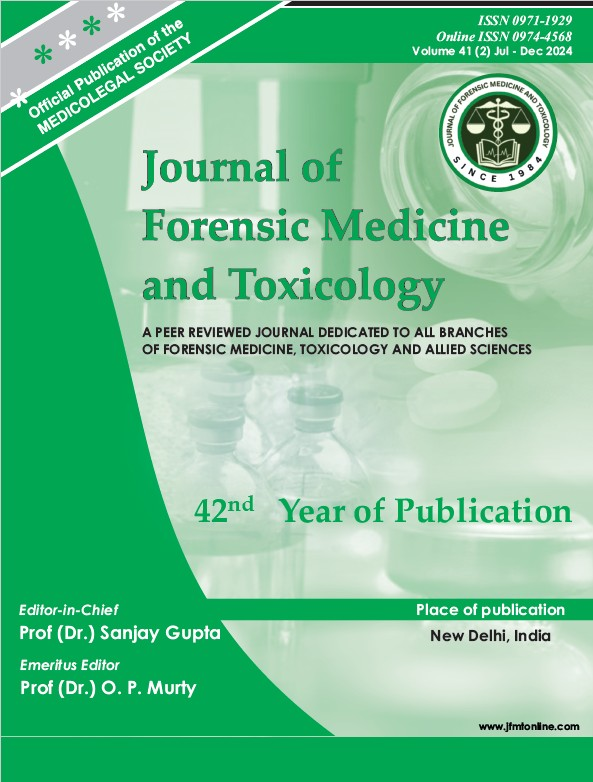STUDY OF AGE ESTIMATION FROM EPIPHYSEAL UNION OF LONG BONES OF KNEE JOINT BY RADIOGRAPHY
Keywords:
individual, restraints, dieteticAbstract
The determination of age may be required for the identification of an individual, living or dead.1 The assessment of age is for legal purpose for administration of justice in criminal and civil cases. Whether a child had reached the age at which the law holds it responsible for its acts, and if so, what manner of punishment or restraints The universally accepted methods of estimating age in and hip. The diaphyseo-epiphyseal union is universally present in all individuals, and therefore may be taken as legally acceptable indicator of age.2 Ossification of bones is helpful for determination of age. Skiagraphy has now made it possible to determine age in living persons, by studying the extent of ossification and the union of epiphyses in bones. Estimation of age from epiphyseal union of long bones is also possible in dead and decomposed bodies also, as the bones resist putrefaction and mutilation for long time. Ossification and the union of epiphyses by this method, and gives relatively reliable
Downloads
References
Dogra TD, Rudra A. Medical jurisprudence & toxicology 11th ed. Gokhle market (Delhi): Delhi law howse;2005:80-81.
. Todd TW. The anatomical features of epiphyseal union. Child dev 1930;1:186-194.
. Dikshit PC.Textbook of Forensic Medicine & Toxicology.1st ed. Ansari road daryaganj, New Delhi: Peepee Publishers and Distributors(P) Ltd.;2007;55.
Vij K. Textbook of Forensic Medicine & Toxicology. 2nd ed. New Delhi:BI. Churchill livingstone pvt. Ltd.;2002.p.80-81.
. Subramanyam BV. Medical Jurisprudence & Toxicology. 22nd ed. New Delhi: Butterworth;1999.p.52.




